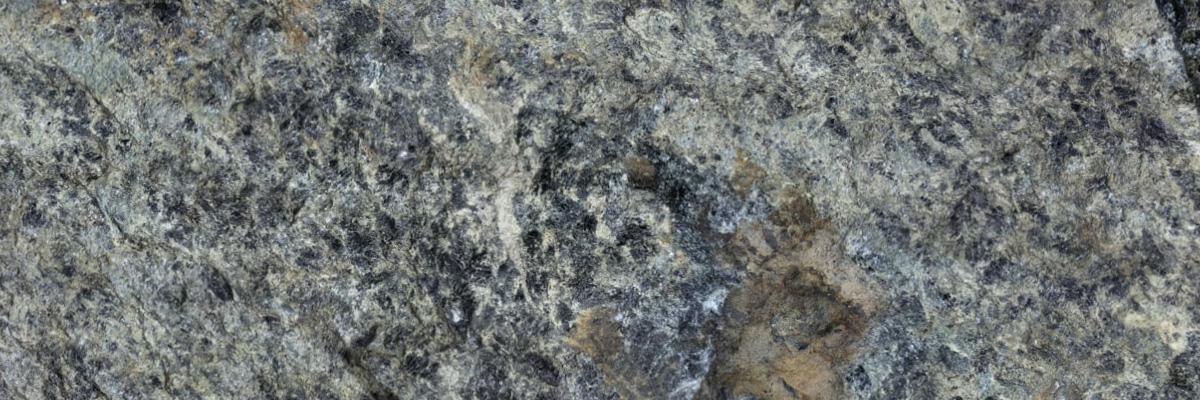Amphibolite is a metamorphic rock that belongs to the medium- to high-grade metamorphic class. The rock is predominantly composed of amphibole minerals, such as hornblende, and plagioclase feldspar, giving it a characteristic dark green to black color. Amphibolite typically exhibits a coarse-grained, crystalline texture, with the minerals arranged in a sub-parallel to interlocking fashion.
Mineral Makeup
The primary minerals found in amphibolite are amphibole (usually hornblende) and plagioclase feldspar. In some instances, other minerals such as biotite, garnet, quartz, or epidote may be present. The specific mineral composition can vary depending on the parent rock and metamorphic conditions the rock has experienced.
Origin
Amphibolite forms through the metamorphism of igneous rocks, such as basalt or gabbro, or sedimentary rocks, like shales and graywacke, under medium- to high-grade metamorphic conditions. This transformation occurs due to exposure to heat and pressure, often associated with tectonic activity, which results in the growth of new mineral assemblages, such as amphibole and plagioclase feldspar.
Occurrence
Amphibolite can be found in various geological settings where metamorphism has taken place, including mountain belts, continental collision zones, and areas affected by regional metamorphism. Notable occurrences of amphibolite can be found in the Canadian Shield, the Scandinavian Caledonides, and the Appalachians in the eastern United States.
Metaphysical
Amphibolite is believed to possess metaphysical properties related to grounding, protection, and emotional healing. The rock’s connection to the Earth’s transformative forces is thought to provide stability and support during challenging times. It is also said to facilitate the release of negative emotions, promoting emotional balance and self-discovery.
| Class | Metamorphic (Foliated) |
| Mineral Makeup | Primarily amphibole (hornblende) and plagioclase feldspar, with possible biotite, garnet, quartz, or epidote |
| Luster | Vitreous to dull |
| Hardness (Mohs) | 5-7 |
| Streak | White or colorless |
| Color | Dark green to black |
| Cleavage | Perfect (amphibole); good (plagioclase) |
| Specific Gravity | 2.9 to 3.3 |


